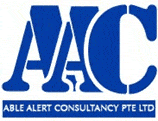05 Oct 2023
Speeches
Opening Address by Mr Christopher Koh,
General Manager, Workplace Safety and Health Council
at the Safety and Health in Higher Education Forum 2023
on Thursday, 5 October 2023, 9am, at Nanyang Technological University
Ms Tan Aik Na, Senior Vice President, Administration,
Nanyang Technological University of Singapore (NTU),
Dr Peck Thian Guan, Chairman of the WSH Council
(Higher Education and Research) Working Group,
Distinguished guests,
Ladies and Gentlemen.
Introduction
1. Good morning. I am very happy to be here today to join you at this year’s Safety and Health in Higher Education Forum. Thank you all for your commitment to safety and health.
2. When I reflected on the theme of this Forum, “Creating a Stronger Safety and Health Culture: Key Success Factors and Practices”, we should really consider what the key success factors in creating a stronger WSH culture would be.
3. During my Address at the same Forum last year, I spoke about two key success factors – firstly, having the willingness in the heart to foster a strong WSH culture; and secondly, having the knowledge in the head to implement WSH policies and practices. So, in much of what the WSH Council does, our goal is to foster willingness and imbue the practical knowledge needed to maintain and improve WSH standards.
4. There is, I believe, beyond these two factors, a third key success factor, which is partnership. Partnership is crucial because the strong WSH culture requires all stakeholders to come together, be aligned, and collaborate. In every company, worksite or workplace, its culture is shaped by what the employers espouse, and what the employees believe. Employers and employees need to be in partnership to foster a stronger WSH culture, which serves as the foundation for a safer and healthier workplace.
About HERWG
5. In the area of WSH for higher education sector, we are fortunate to have a strong partnership between the WSH Council and various Institutes of Higher Learning (IHLs), in the form of the Higher Education and Research Working Group, known as HERWG for short.
6. The HERWG was officially formed in 2015 to raise the safety and health standards in the higher education and research institutions. Its 18 member organisations include the six universities, five polytechnics, the Institute of Technical Education (ITE), three national research clusters, and three healthcare clusters.
7. The collective efforts from these HERWG members raise safety and health standards, not only for our current workforce in the IHLs, but also in preparing the workforce of the future – the students in our institutions. Thanks to the partnership within the HERWG, our students in the IHLs are taught safety and health as part of their curriculum and are provided with opportunities to apply their learning through co-curricular activities and campus-related engagements.
HERWG’s Efforts
8. Over the years, the HERWG’s efforts have yielded positive results. In 2020, the HERWG developed and introduced a Freshmen Orientation Programme for the 12 IHLs. The programme addresses topics such as risk management, unsafe acts, hazards, incident reporting, and response to emergencies on campus. Through this programme, all incoming students are ensured a safe start to their academic journey.
9. Last year, the HERWG completed developing the pre-internship programme to prepare students for their job attachments. The programme ensures that students are aware of the WSH Regulations, common hazards at internship workplaces and what can be done to avoid these hazards.
10. This year, the HERWG is developing 3 new pre-internship e-learning modules. These industry-specific modules are designed to prepare IHL students for their off-campus internships in the construction, marine, and process and chemical industries.
11. Beyond safety of students’ academic and vocational pursuits, the HERWG is also looking at safety in their athletic activities. The HERWG is developing a new Sports Safety Framework to reduce, and possibly even eliminate, the number of serious sports-related injuries. In addition, a Risk Assessment Framework for outdoor adventure learning is also in the works. I encourage all IHLs to participate in the development of both frameworks and adopt them when completed. We will hear more about the Sports Safety Framework later in the Forum.
Collaborative Efforts in Advancing Safety Education
12. I shared these initiatives to acknowledge the power of partnership in making an impact on the safety and health of IHL students.
13. By instilling a safety-conscious mindset in students, it will hopefully shape their safety-related behaviour well after they enter the workforce. Many of these students will later assume managerial roles at work, placing them in a position to strengthen their organisation’s WSH culture. The IHLs thus serve as an important pillar in developing our future workforce to be one that is not only highly productive but also prioritises safety and health. This is why the WSH Council deeply appreciates our partnership with the IHLs.
14. In 2022, the HERWG’s collective efforts reached over 57,000 IHL students, from freshmen undergoing orientation to seniors going for their internships and doing final-year projects. So, even though it is a small workgroup, it has a big impact. I look forward to the continued partnership within the HERWG to extend its impact and reach to even more students in the coming years.
Conclusion
15. As we listen to the presentations for today’s Forum, do bear in mind the key success factors which I shared earlier –willingness in the heart, knowledge in the head, and partnership with joined hands. These factors will continue to guide us in creating a stronger safety and health culture.
16. I thank NTU for organising and hosting this year’s Forum, and for working together with NUS, A*STAR and SMU to put together today’s programme. I wish everyone an enriching exchange of ideas and experiences.
Thank you.
